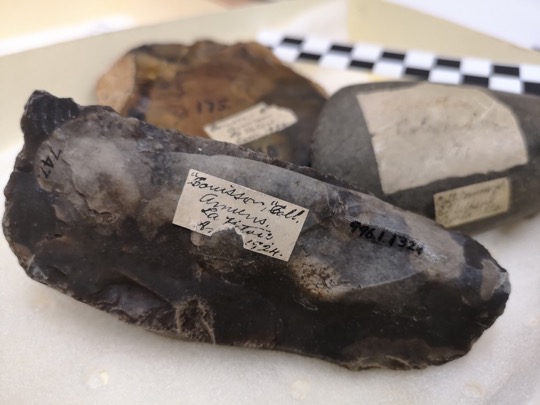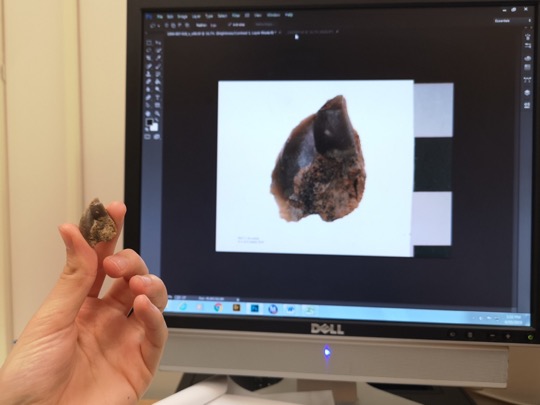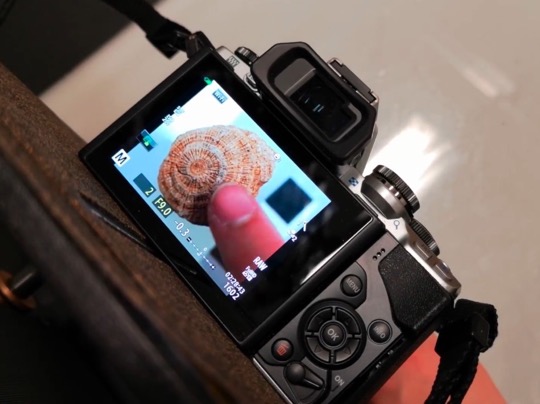UAM Summer Internship Blog 2019: Digitizing the Bryan/Gruhn Archaeology Collection
Fatme Elkadry - 15 August 2019
The Bryan/Gruhn Archaeology Collection contains over 10,000 prehistoric and historic artifacts that contextualize past societies. The artifacts are frequently used by students in research and in learning anthropological concepts. Looking at some of the artifacts, it would be easy to think that they are just stones. In reality, these are stones that past societies had intentionally shaped into tools, like blades or scrapers, to use in their daily lives. Modern-day archaeologists find these tools across the world. Each artifact advances our understanding of how historic populations functioned and reveals their level of innovation and creativity.
The Bryan/Gruhn Archaeology Collection is digitizing its artifacts by producing high-quality photographs for upload onto Mimsy XG. Mimsy is a museum collections management software used by UAlberta Museums to database many of its collections. This system contains specific data information for each museum object within a collection. By uploading photographs of each artifact into Mimsy, we ensure that we have adequate visualizations of what exists in the collection. In the future, this information can be transferred into a public search site, allowing the collection to be visible and accessible to all.
During my time in the Bryan/Gruhn Archaeology Collection, I worked with artifacts found in France by archaeologists conducting fieldwork. I learnt how to set the camera and manipulate lighting to take detailed photos of the artifacts. The artifact is photographed next to a scale to clearly depict its size. After photographing the artifacts, I edited the photos on Adobe Photoshop to get the closest representation of the physical object. Shirley Harpham (Archaeology Technologist of the collection) taught me how to analyze the artifacts to understand which side was the dorsal (front), ventral (back), and lateral (side). These are important details that are added to the photographs to help viewers better understand the artifact.
Photographing artifacts is just one of the many ongoing projects in the Bryan/Gruhn Archaeology Collection. If you’d like to get involved in the collection, there are volunteer openings for students! To learn more, you may contact Shirley directly.
This opportunity helped me understand that managing a museum collection includes much more than overseeing the physical artifacts. Just as importantly, it also includes managing the artifact’s associated data information and organizing an online version of the collection. It was an honour to learn from Shirley’s expertise! Watch the film to get a detailed look at the work entailed in digitizing the Bryan/Gruhn Archaeology Collection.


